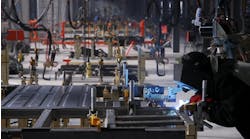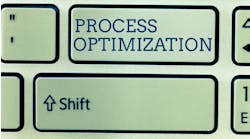The Digital Factory framework: An international standard for semantic interoperability
By Kaoru Onodera, Yokogawa Electric technology marketing
As society and the economy are globalizing and business values are shifting from goods to information, the international community is facing challenges, such as the explosion of data, difficulties in transferring knowledge, decarbonization, and sustainable development goals. New technologies such as artificial intelligence (AI), robotics, and the Internet of Things (IoT) may help solve these challenges, but there is also concern that they could threaten safety and security and cause new problems such as job insecurity.
Under these circumstances, developed countries have started activities aiming to build a global social and economic ecosystem. Prominent examples are “Shaping Europe’s Digital Future” proposed by the European Commission, its related project GAIA-X, and Society 5.0 as promoted by the Japanese government. The manufacturing industry is also charged with responding to social and economic changes, and the concept has been discussed internationally. This article introduces the Digital Factory framework, an international standard that specifies the core technologies for achieving smart manufacturing.
Smart manufacturing & international standardizations
Smart manufacturing is a concept that represents a common international understanding of the ideal state of the manufacturing industry, covering the manufacturing value chain and the entire lifecycle of products and production systems. Smart manufacturing aims to create new added value by using digital technology and connecting a wide variety of systems. To achieve this, systems must be not only connected but also understandable to each other. ISO and IEC, both of which are international standardization organizations, define smart manufacturing as follows: “Manufacturing that improves its performance aspects with integrated and intelligent use of processes and resources in cyber, physical and human spheres to create and deliver products and services, which also collaborates with other domains within enterprises’ value chains.”
Collaboration with management information is essential to improving manufacturing performance, and the ultimate goal of a company is to improve its management performance through this collaboration. This can be achieved only when all elements of the supply chain collaborate. Since the manufacturing industry has become deeply globalized, its supply chains are not limited to a single country but extend around the world. Therefore, to achieve smart manufacturing, it is necessary to establish universal definitions and rules independent of language, culture, country, region, industry, business type, and role. That is, smart manufacturing requires international standardization.
Its importance in smart manufacturing is evidenced by the fact that international standardization is positioned as the core of Industrie 4.0, which is Germany’s initiative to achieve smart manufacturing, and that the EU and many other countries such as the US, China, and Japan have expressed their support for this initiative. International standardization is an important measure for achieving smart manufacturing. It is important that companies and consortia work on smart manufacturing independently in a bottom-up manner.
However, if they proceed without taking international standardization into account, they may become internationally isolated. In such a state, they cannot collaborate with companies and customers in other countries, with the result that smart manufacturing is only applicable to a specific region or technology. The concept of semantic interoperability, which can avoid international isolation and achieve global collaboration, is attracting major attention in relation to international standardization for achieving smart manufacturing.
Challenges in achieving semantic interoperability
Semantic interoperability is described in “Semantic interoperability: challenges in the digital transformation age” as “The ability of computer systems to exchange data with unambiguous, shared meaning” plus “A requirement to enable machine-computable logic, inferencing, knowledge discovery, and data federation between information systems.”
Of course, this includes the ability of machines not only to understand each other but also to make the information understandable for humans. Semantic interoperability is the ability of systems with different architectures, using different languages and protocols, to exchange information and use it without compromising its meaning. In other words, systems not only connect with each other but also understand each other regardless of differences in language, culture, countries, regions, industries, business categories, and roles.
Semantic interoperability is an essential element for achieving smart manufacturing.
As the manufacturing industry continues to globalize, supply chains that cross the boundaries of companies and countries are common. For example, a company in France designs a product, companies in Bangladesh and Brazil manufacture its parts, a company in China assembles them, and a company in Japan releases the finished product into the market. Tools and mechanisms used by each company in this supply chain typically have architectures adapted to the culture of each country. If this supply chain is fixed, this collaboration can be maintained through efforts of the companies involved.
However, we are in the era of VUCA—volatility, uncertainty, complexity, and ambiguity—full of unexpected incidents such as the COVID -19 pandemic, natural disasters, political changes, and technological innovations. This puts supply chains at risk of sudden disruption for practically all companies. In response, a global system must be established that can select the most suitable supply chain elements at any time and implement them with minimum time and effort, not only within a specific company or supply chain, but also from a variety of open options independent of the implementation technology.
To enable flexible horizontal collaboration and optimize the value chain, it is necessary to integrate information throughout the lifecycle of products and production systems (from planning and design to disposal) and enable each stakeholder to use the information seamlessly. This is achieved by semantic interoperability. Currently, the following obstacles hinder the establishment of semantic interoperability:
· Decentralized information: information on manufacturing systems is dispersed among various documents, drawings and lists
· Fragmented information: even if it is digitized, information is stored in different software systems, and must be re-entered or converted for use in other systems
· Isolated information: updates of data in one system are not automatically reflected in other systems
Currently, substantial human intervention is needed to reach this state of operations. Meanwhile, digitization has caused an information explosion and the amount of data already exceeds the capacity of human beings to process it. Semantic interoperability is expected to free people from this information flood. This is a fundamental issue to be solved to achieve smart manufacturing.
Next week, in Part 2 of this feature, we explore some of those solutions. Stay tuned…



